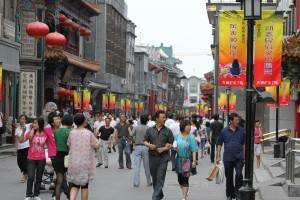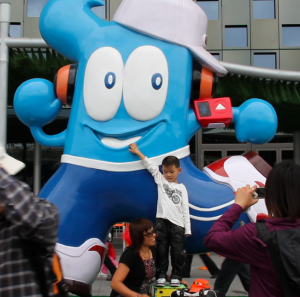The Beauty of a Language
Note: Due to limitations of our blog I can not display Chinese characters. I have placed a graphic at the end of the post to which you can refer to for the characters. Example: “A” in the post would be “A” in the graphic below. Thanks!
When you think of a beautiful language, French or Italian comes to mind. Flowing words, rolling r’s, and wonderful pronunciation all combine into a ocean of words. On the opposite side of the spectrum is Chinese. Crazy pictures, impossible sounds, and ridiculous combinations astound the mind into thinking quite the contrary of a language of love. Or is it?
The Chinese language is made up of more than 40,000 individual characters. A character is simply a single picture with a given meaning behind it. According to the Chinese government, an educated adult will know between 6,000 and 7,000 characters in his or her lifetime. Knowledge of 3,000 characters is generally required to read a Chinese newspaper.
During the cultural revolution of China in the 1950s, the government realized the need to simplify the language forgoing the traditional complex characters and settling on Mandarin in a simplified form. This is the language you will see and hear today.
In general when you see a character it has one single meaning. For example the character “A”(hao) means good. If you study the character closely enough you can see the outline of a women on the left side and a man on the right. When a man a women are together things are always good. Thus “A”means good individually. If we place a “B” (ni), meaning “you,” next to it and create “BA”(ni hao) we would be saying hello. By combining individual characters together words and phrases can be formed. Literally translated “BA” (ni hao) would mean “You Good,” but in Chinese it means “hello.” Simple enough? It gets better!
It is next to impossible to memorize each and every character. Fear not! The language is comprised of little over 200 radicals. Radicals are simple elements of each character that generally mean something. If we look at the word “C” (re) or hot, we can see the fire radical contained in it, or the four lines on the bottom of the character. Picture a fire lit beneath the character. You would now know that anytime you see the fire radial on a different word that it will mean something similar.
Finally, lets look at the character “D”(ren) or people. You can easily tell how the character looks very similar to a person. In fact the 2010 World Expo used this character in creating the mascot Haibao. The spoken word itself actually means treasure of the sea. If you can learn these simple meanings behind the characters your Chinese learning will be leaps ahead.
The most fascinating aspect of the language is the tones. You can say the exact same thing, but with different tones allowing you to create four different words. By simply inflecting your voice sharper, softer, null, or sharp then soft, you can create such tones. Let’s again use the word hao as an example. “A”(hao) means good and is low falling and high rising. “E”(hào) means very grand water. “F”(háo) means roar or cry. Finally you might have a just a neutral hao meaning something completely different.
During my first attempts to speak the language I was extremely careful to try to pronounce everything clear and slow. It didn’t work. Ironically however when I mumble through words at a lower voice level the translation comes across with success. It seems most natives speak this way, and yet it is all understandable.
At first, I thought that using pictures as a language would be extremely primitive. In a way it is, but it has developed over thousands of years into a beautiful art. Communication at the highest level accords here. Schools here teach choreography classes using ink and brush. In English every word has a meaning. In Chinese every character has a story.



I loved learning about this beautiful language. Thanks for this great story.